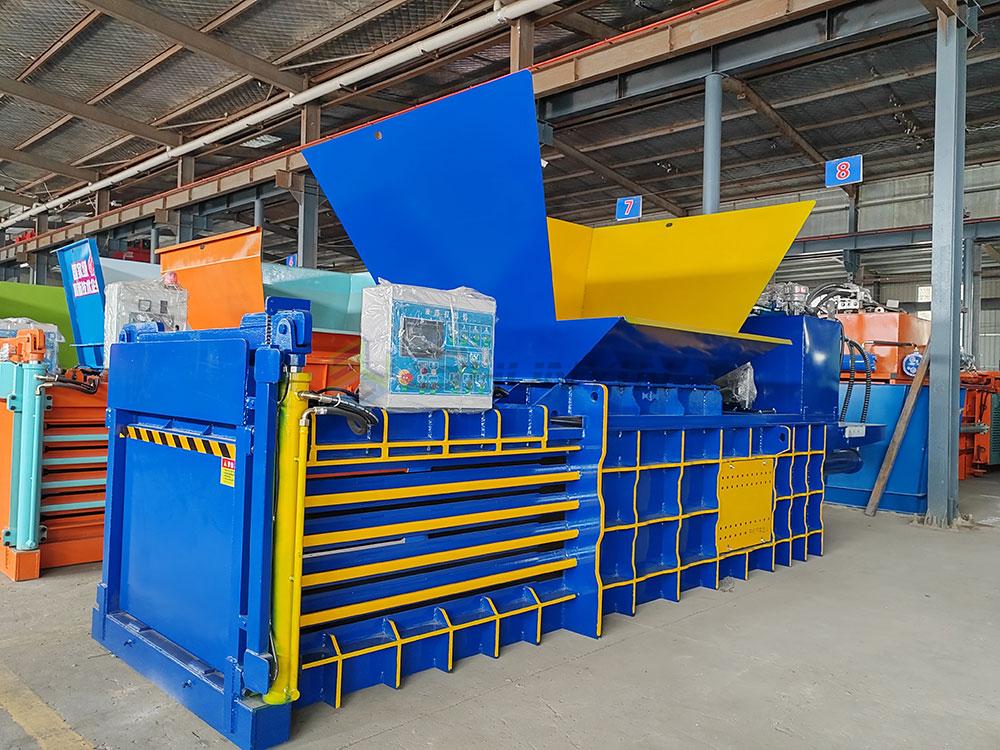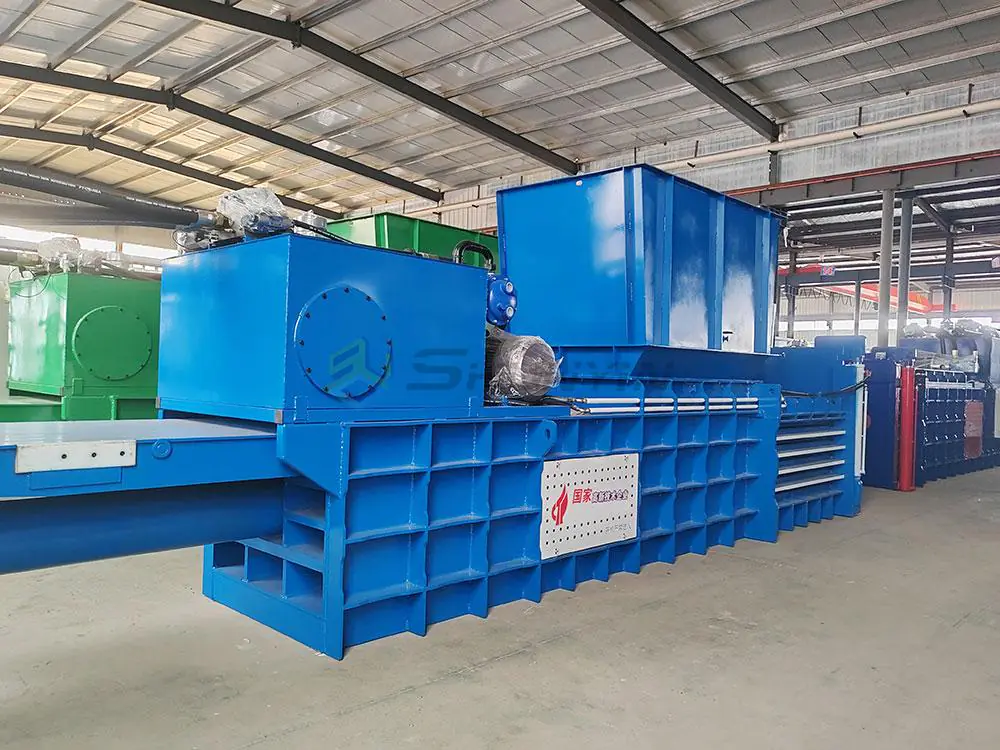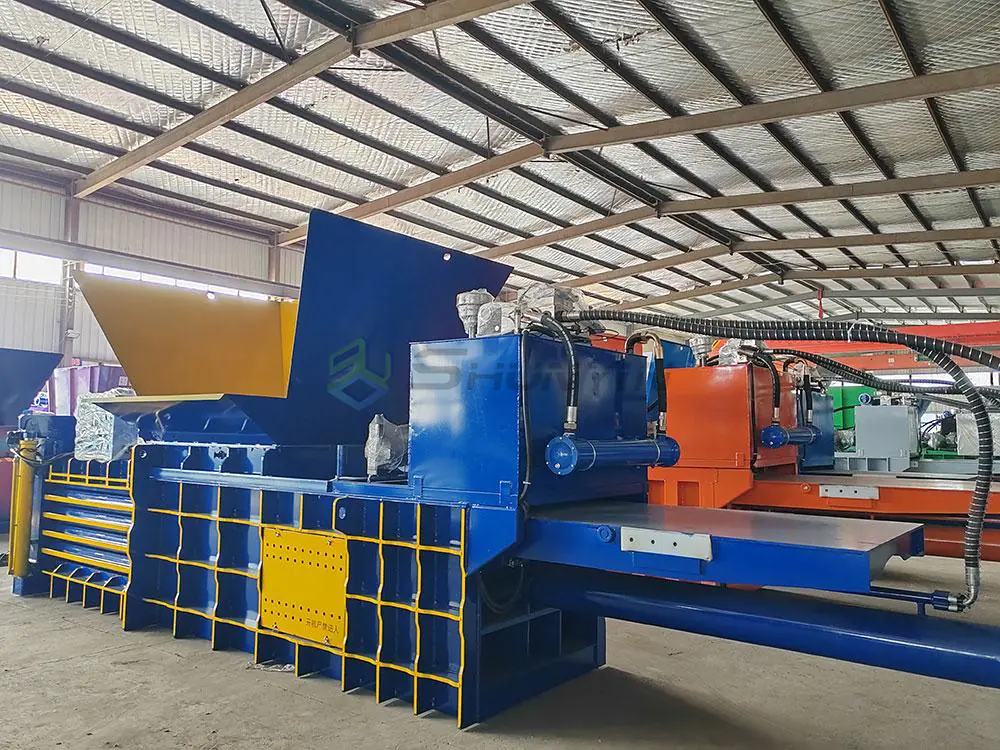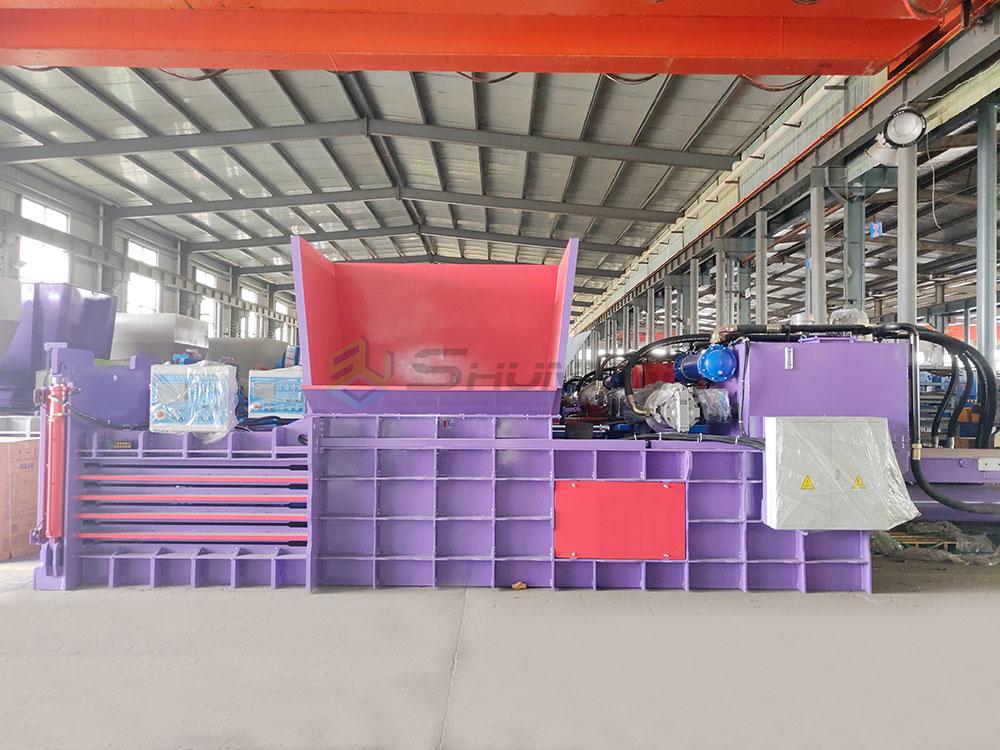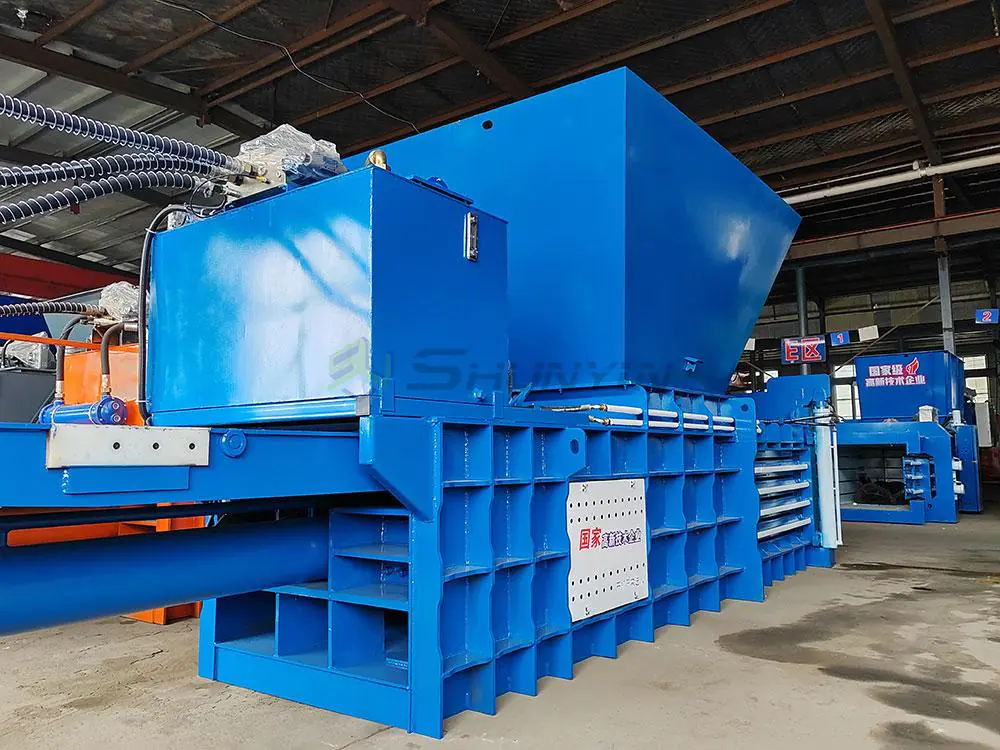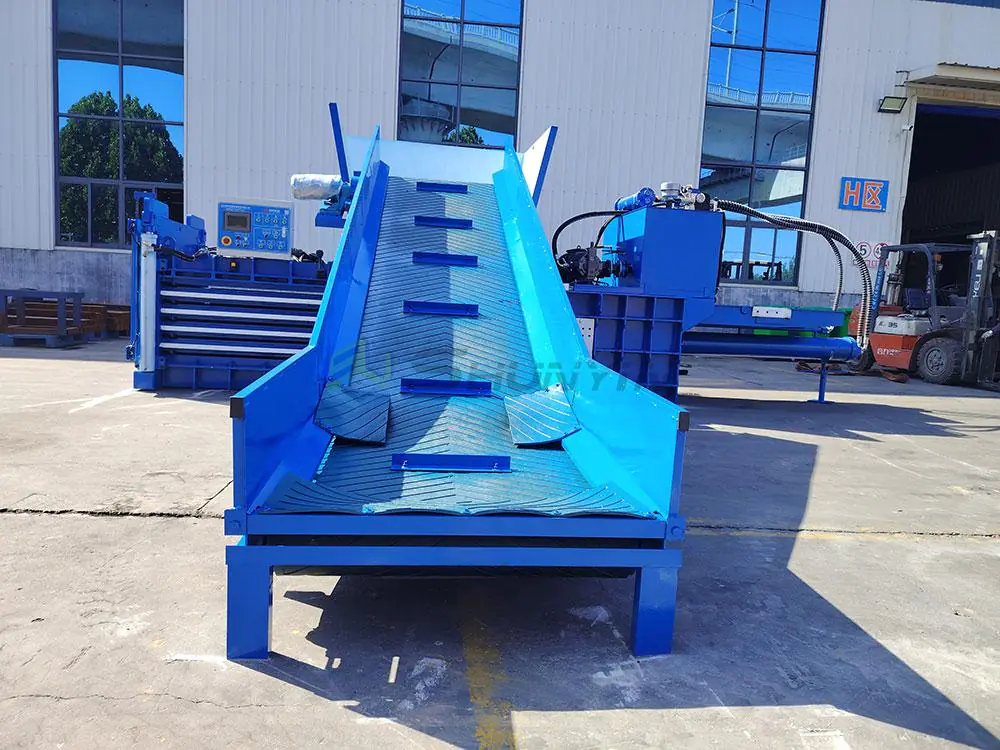Scrap piles consume valuable factory space daily. Manual compression fails against modern waste volumes. Hydraulic baling presses conquer bulk materials through engineered force efficiently.
A hydraulic baling press machine compresses recyclables using high-pressure oil cylinders to create dense, transport-ready bales that reduce waste volume by 90%, cut handling costs by 70%, and maximize recycling revenue per square meter.

See how this industrial powerhouse reshapes recycling economics. Explore its core functions through industry-proven applications below.
What is a hydraulic baling machine?
Loose waste makes storage costly endlessly. Inefficient transport squanders profit potential. Hydraulic balers transform messy scrap streams into profit cubes.
Hydraulic baling machines use oil-powered pistons compressing material at up to 350kPa to instantly form condensed blocks that streamline logistics and increase recyclable value by 30-60%.

Power transfer mechanics
Force generation simplified:
- Pump action
Electric motor pressurizes hydraulic oil reservoir - Cylinder movement
Pressurized oil drives ram downward - Compression cycle
Materials crushed against stationary platen
| Newspaper | Cardboard | Plastic | |
|---|---|---|---|
| Pressure Required | 100kPa | 180kPa | 300kPa |
| Typical Bale Density | 650kg/m³ | 800kg/m³ | 950kg/m³ |
Our SY-880H model maintains force consistency during 4-ton/hour operations. Irregular shapes blocking your ram? Custom chamber designs prevent material bridging. See chamber options: https://lemonchiffon-shark-638535.hostingersite.com/contact/
What is the purpose of a hydraulic press machine?
Uncontrolled scrap volumes trigger expensive delays regularly. Storage limitations force premature disposal. Hydraulic presses deliver precise volumetric control.
Hydraulic presses convert irregular waste into uniform blocks enabling 500% better truck loading efficiency, 40% higher scrap prices, and safer warehouses through stabilized material stacking.

Dual commercial advantages
Industrial benefits categorized:
- Economic impact
Transport cost savings exceed US$78,000/year for mid-sized facilities - Operational enablement
Bales withstand weather exposure during price-maximizing storage
| Waste Type | Space Reduction | Value Increase |
|---|---|---|
| PET Bottles | 9:1 | 40% |
| OCC Cardboard | 6:1 | 65% |
| Aluminum Cans | 12:1 | 85% |
Sensitive electronics require lower pressure settings. Our programmable units auto-adjust PSI during compression. Exporting bales overseas? ISO-standard sizing avoids rejection at destination ports. Request sizing charts: https://lemonchiffon-shark-638535.hostingersite.com/contact/
What are the disadvantages of hydraulic press machine?
Hydraulic leaks ruin factory floors unexpectedly. Power outages halt material flow entirely. Awareness prevents operational hiccups smartly.
Hydraulic presses require consistent maintenance to prevent oil leaks, need substantial installation space, and involve higher initial costs than mechanical alternatives – yet payback occurs within 14-24 months.

Mitigation strategies
Challenges addressed:
- Maintenance demands
Daily seal checks prevent 90% of leaks - Space requirements
Compact models like SY-550V need just 18m² - Capital recovery
ROI calculators verify profit timelines
Cost/benefit comparison
| Hydraulic | Mechanical | |
|---|---|---|
| Initial cost | $$$ | $$ |
| Tons/day capacity | 65 | 28 |
| Service cycle | 400 hours | 150 hours |
Humid environments accelerate seal degradation. Our marine-grade units use stainless components. Lacking maintenance staff? Remote diagnostics alert you before failures occur. Download maintenance manuals here: https://lemonchiffon-shark-638535.hostingersite.com/contact/
What is the purpose of a baler machine1?
Chaotic material handling increases labor costs steadily. Recycling contamination causes revenue loss silently. Balers systematize and purify material streams.
Balers standardize waste handling by creating uniform packages that reduce sorting labor by 80%, ensure recyclable acceptance, and qualify materials for premium recycling programs requiring certification.
Industry-specific applications
Essential functions per sector:
- Distribution centers
Eliminate cardboard collection fees - Scrap yards
Classify metals for pricing tiers - Paper mills
Maintain fiber moisture during storage
| Before Baling | After Baling | |
|---|---|---|
| Processing time per ton | 45 minutes | 7 minutes |
| Injury incidents/month | 3.2 | 0.3 |
| Material rejection rate | 17% | 2% |
Food-grade recyclables need contamination control. Our models feature removable liners between batches. Struggling with certification? We provide documentation templates for 48 markets. Get sample paperwork: https://lemonchiffon-shark-638535.hostingersite.com/contact/
Conclusion
Hydraulic baling presses revolutionize scrap management through powerful compression, transforming waste chaos into profit streams while paying back investments swiftly across industries.
-
Explore how baler machines streamline recycling operations and improve material handling efficiency. ↩


